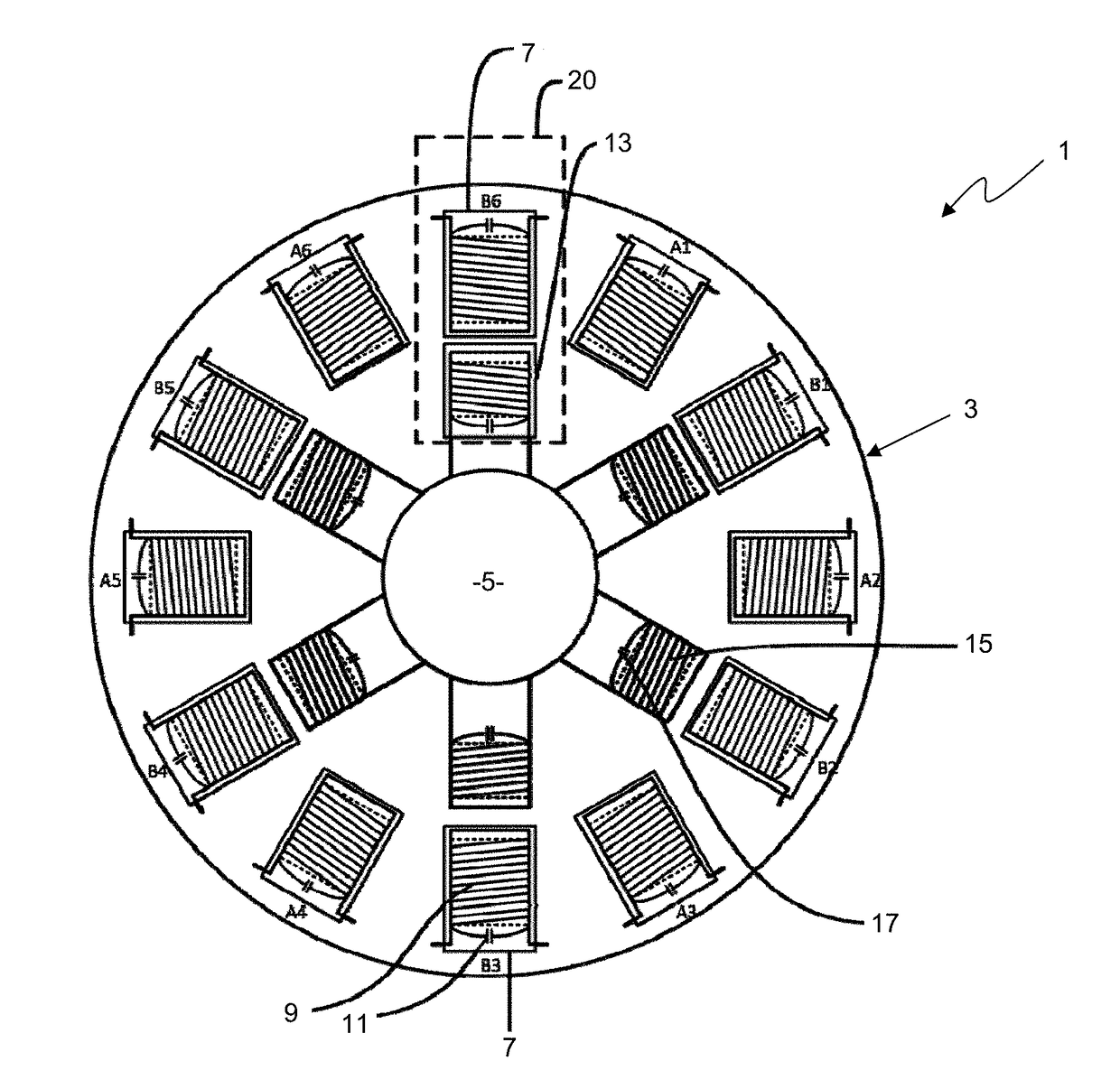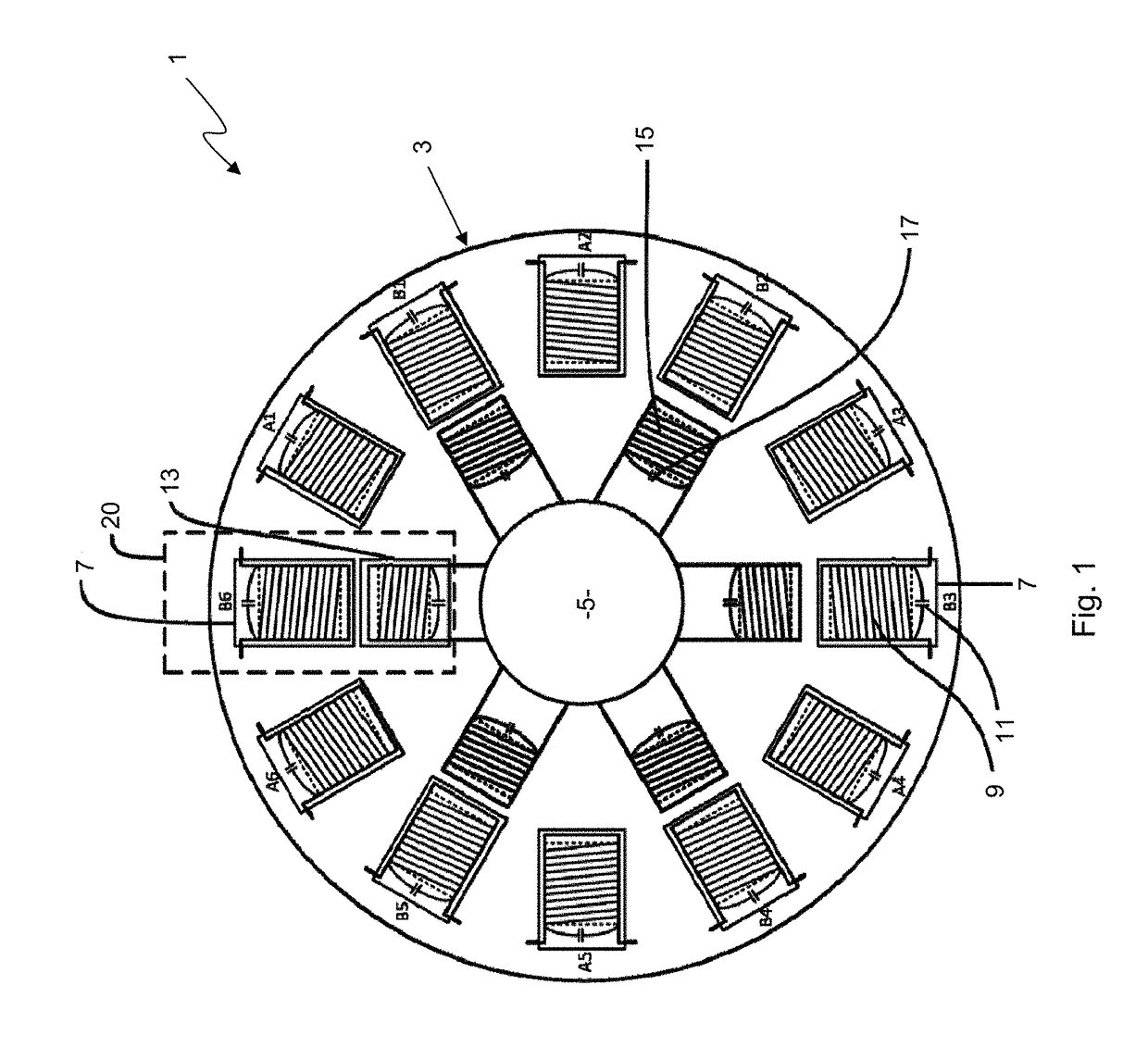Electric motor
a technology of electric motors and coupling motors, applied in the direction of synchronous motors, magnetic circuit rotating parts, magnetic circuit shapes/forms/construction, etc., can solve the problems of significant acoustic noise, internal combustion engine vehicles will eventually have to be replaced by alternative fuel vehicles, and carbon dioxide emissions from electric vehicles are only 30% to 50% of internal combustion engine vehicles. , to achieve the effect of reducing torque ripple, reducing manufacturing costs, and lightening weigh
- Summary
- Abstract
- Description
- Claims
- Application Information
AI Technical Summary
Benefits of technology
Problems solved by technology
Method used
Image
Examples
Embodiment Construction
[0053]Referring to the drawings, FIG. 1 shows a magnetic resonant coupling motor or electric motor 1 comprising a stator 3 and a rotor 5. The stator 3 comprises twelve substantially cylindrical stator salient poles 7 having a radius of approximately 0.03 m and a length of approximately 0.05 m. The stator salient poles 7 are arranged in a ring such that the longitudinal axis of each stator salient pole 7 is directed toward the approximate centre of the stator 3. The stator salient poles 7 are equally spaced apart about the centre of the stator 3 such that the angle between the longitudinal axes of two adjacent stator poles is 30°. The stator 3 is chosen to have an inner diameter of approximately 0.245 m as measured from the inner extremity of one stator salient pole 7 to the inner extremity of another stator salient pole 7 on the opposite side respectively of the stator 3.
[0054]The stator salient poles 7 are made from a non-ferromagnetic material such as Bakelite® or reinforced, rigi...
PUM
 Login to View More
Login to View More Abstract
Description
Claims
Application Information
 Login to View More
Login to View More - R&D
- Intellectual Property
- Life Sciences
- Materials
- Tech Scout
- Unparalleled Data Quality
- Higher Quality Content
- 60% Fewer Hallucinations
Browse by: Latest US Patents, China's latest patents, Technical Efficacy Thesaurus, Application Domain, Technology Topic, Popular Technical Reports.
© 2025 PatSnap. All rights reserved.Legal|Privacy policy|Modern Slavery Act Transparency Statement|Sitemap|About US| Contact US: help@patsnap.com



